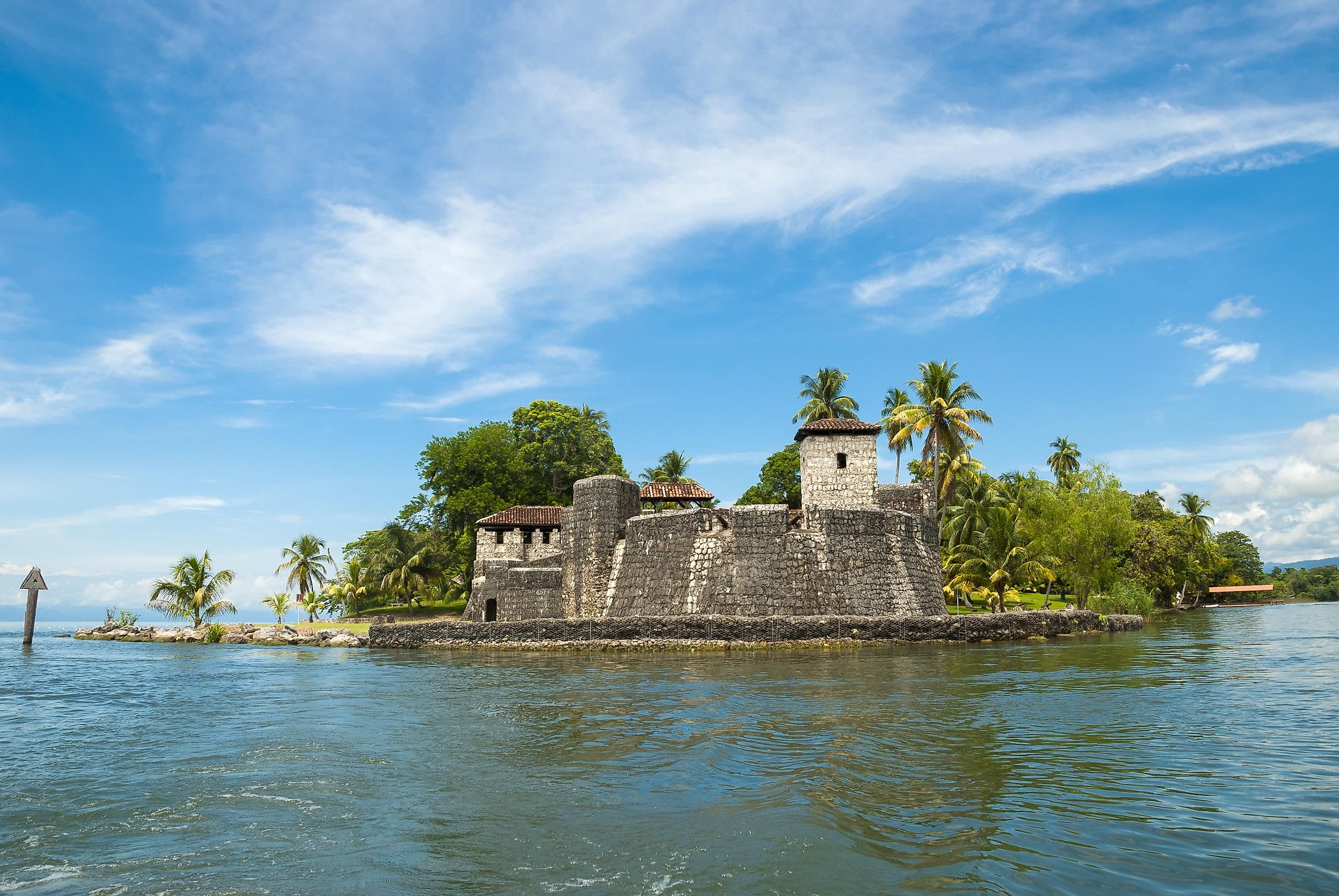
Why I spent 2 months in Rio Dulce despite scathing tourist reviews
Why here?
This question was posed to us on numerous occasions by locals, fellow travelers, and even our Airbnb host. Why did you and your girlfriend come all the way from Canada to Río Dulce for such a long period of time? These somewhat cynical pressings, combined with scathing online reviews, challenged us to dig deep to defend our 2-month stay, and to rebelliously seek out positive experiences, grand and small, both in and around town.
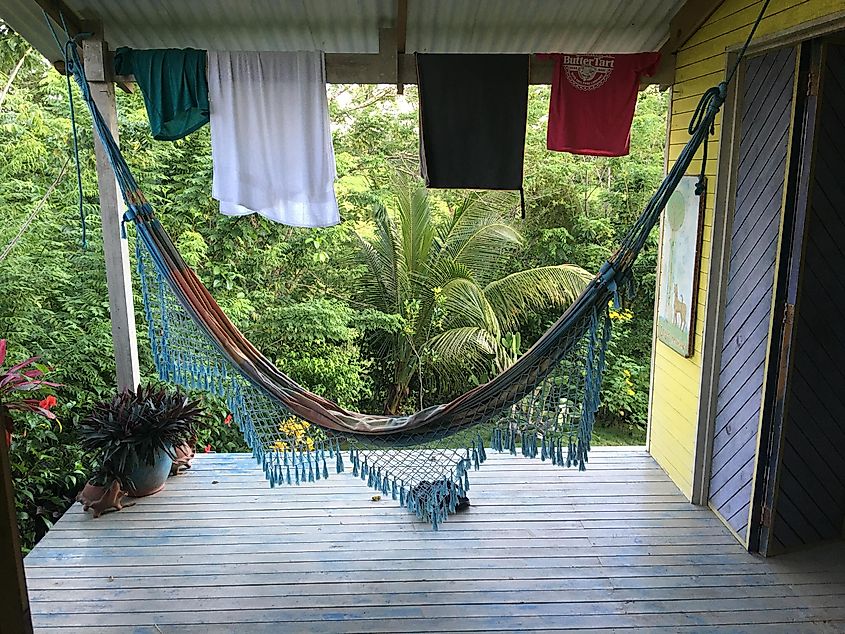
The Pros and Cons Of An Extended Stay In Río Dulce
This part of Eastern Guatemala (the Department of Izabal) is dichotomous, to say the least. At first glance, Río Dulce (sometimes called Fronteras) could be shrugged off as a hectic transit town. The main road lacks sidewalks, is lined to the edge with various establishments, and is regularly overwhelmed with giant, rumbling trucks and zippy tuk tuks that force pedestrians to attentively squeeze their bodies between the obstacles. Especially near the sole, highway-funneling bridge that crosses the titular river, the sweltering Caribbean climate pairs with the pollution to create a rather trying mix. But with all that said, fumes weren't the only thing in the air – so was adventure! Río Dulce is a wild and real place. For us, this was the perfect antidote to the hyper-sanitized nanny-state that our homeland had morphed into. Plus, we were able to rent a house on a private nature reserve, make several fascinating day-trips, and meet loads of interesting people while we were there. I don't know that I would permanently relocate, but I am glad that we defied the nay-sayers.
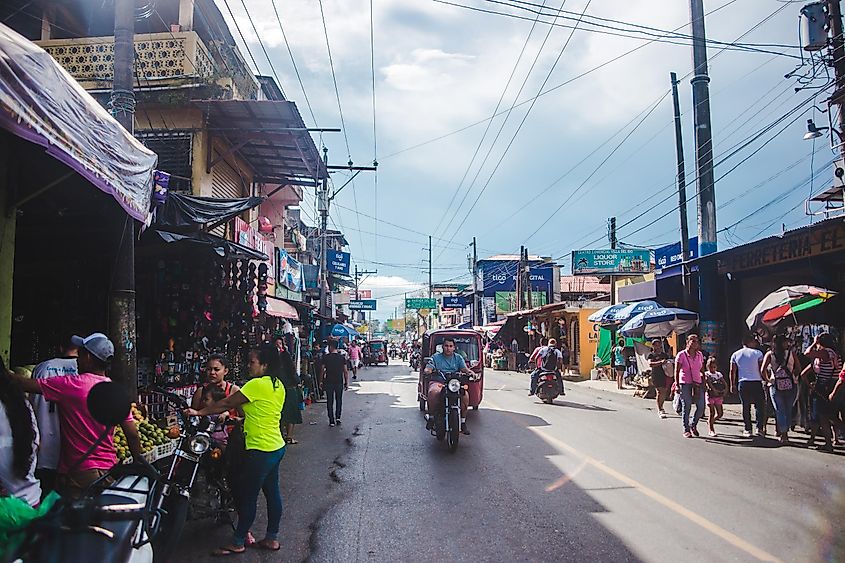
A Quiet Refuge Away From The Main Drag
A good homebase is key to long term traveling. I have certainly enjoyed hostel-hopping for shorter trips, but the preferred approach for the past couple of years has been to find comfortable and affordable places that allow us to settle into a workable rhythm (Irina and I are both "digital nomads"), and from which we can branch out to explore.
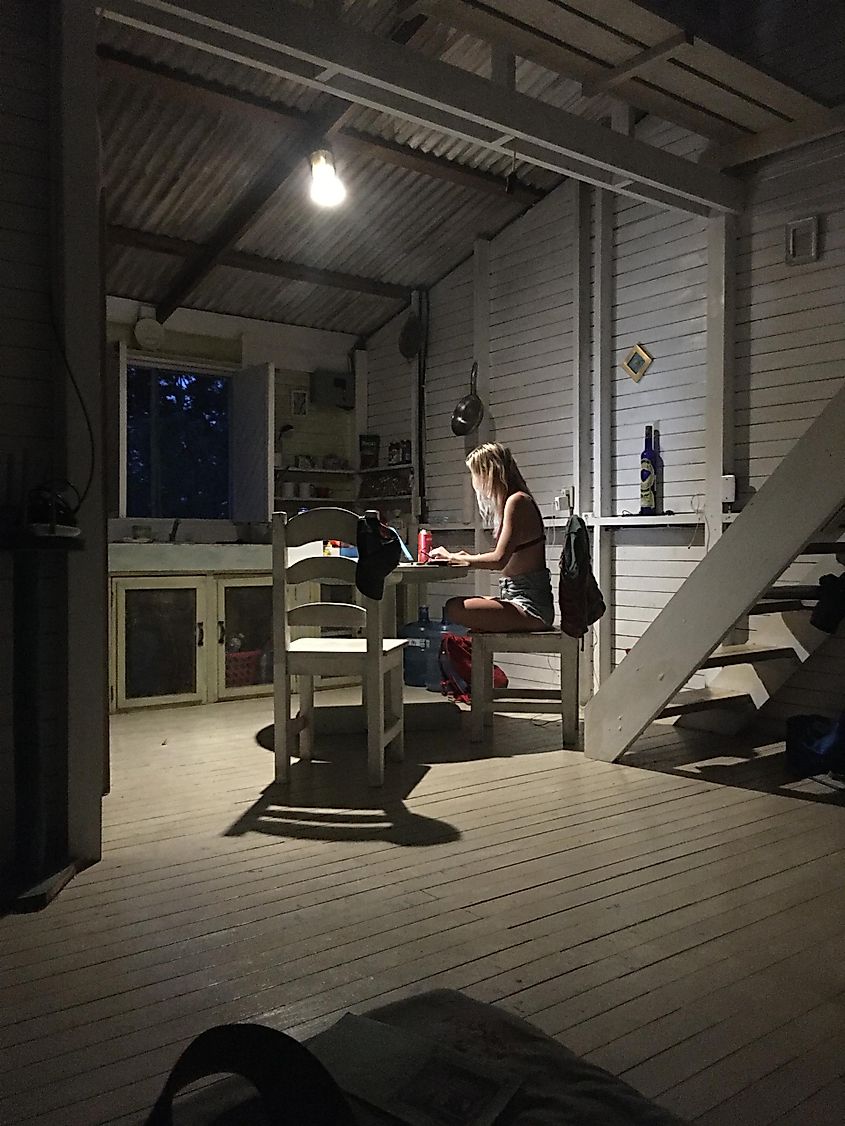
The Quaint Bohemian Farmhouse was exactly what we needed. Make no mistake, it was rustic (no fridge, no hot water, no A/C, and solar-powered), but it was also cozy, authentic, and by fortune of being within the 400-acre Hacienda Tijax Nature Reserve and Marina, well-removed from the Río Dulce madness.
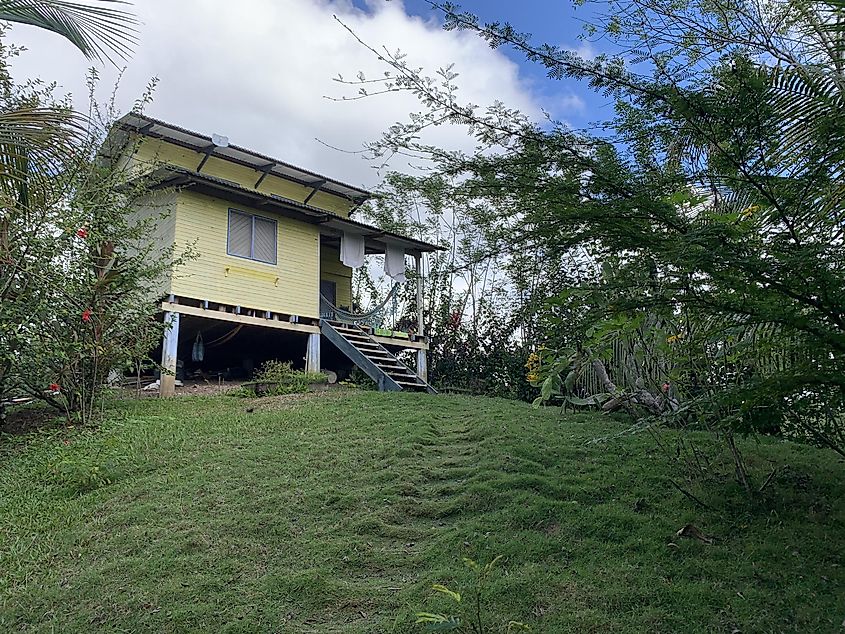
When we weren't cooking meals on our two-burner hot plate, having conversations with the geckos, or swinging life away on the porch hammock, we had access to Tijax's pool, restaurant, group yoga sessions, and trail network that wound through a small part of the jungle, to a stone lookout tower.
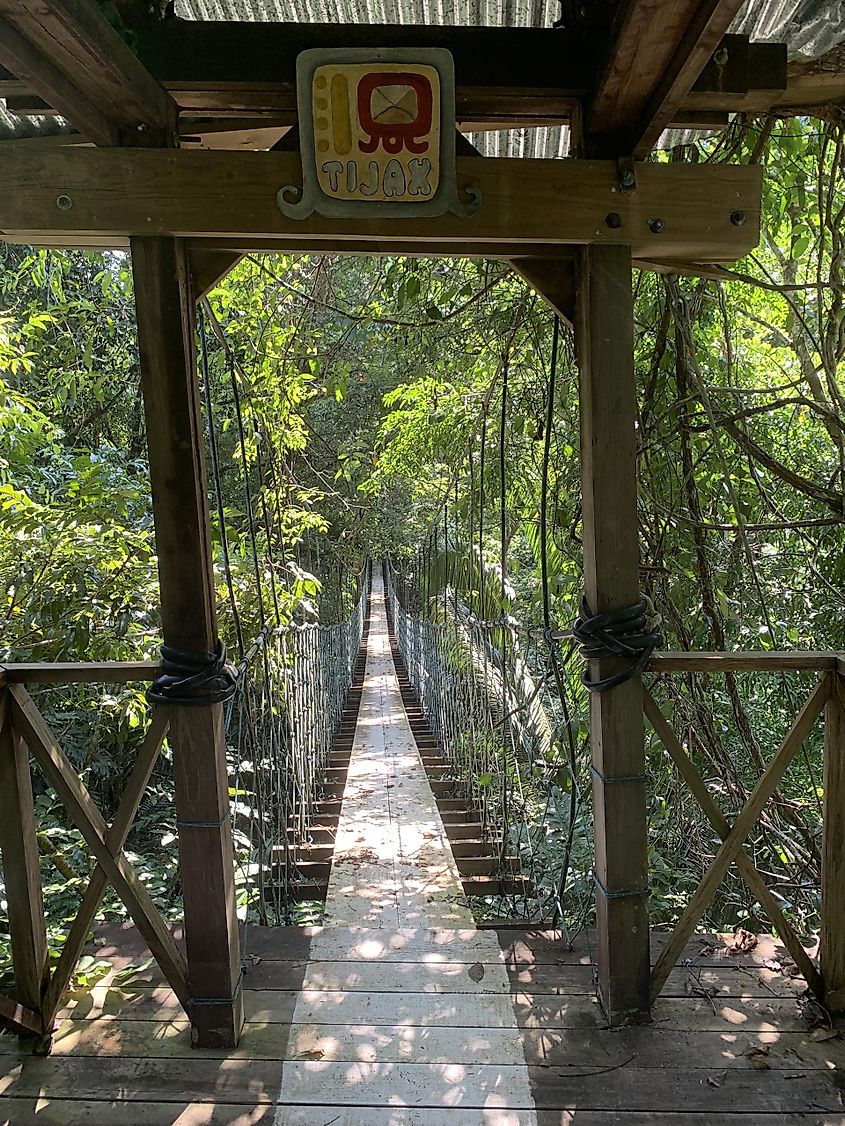
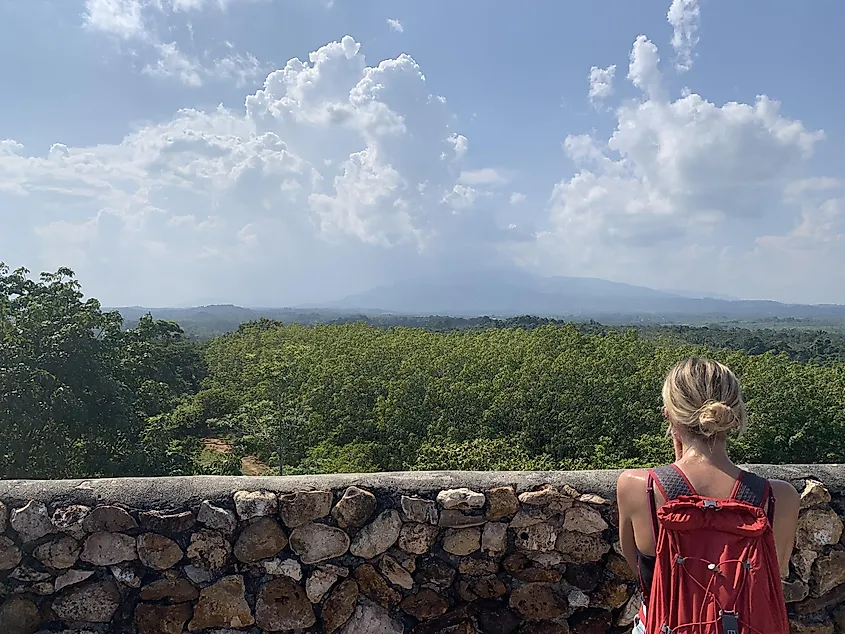
Wholesome Experiences Around Town
The virtue of not having a fridge is that it makes you go out to buy fresh food on a daily basis. I loved the little backroad circuits that revealed themselves over time. Mixing and matching tiendas (neighborhood shops) and roadside produce vendors allowed me to mingle with more people in the area. And engaging with the microcosm via regular errands added structure and necessity to my day greatly improved my Spanish, and unveiled lots of little moments that can't be planned for and are easy to miss if just hopping from one tour to the next. I always got a kick out of the two kids that ran the store closest to our house (the mom owned it but would leave them to steer the ship for entire afternoons), the barefoot kite-flyers, the free-roaming animals, and I even liked the high-octane energy of the highway.
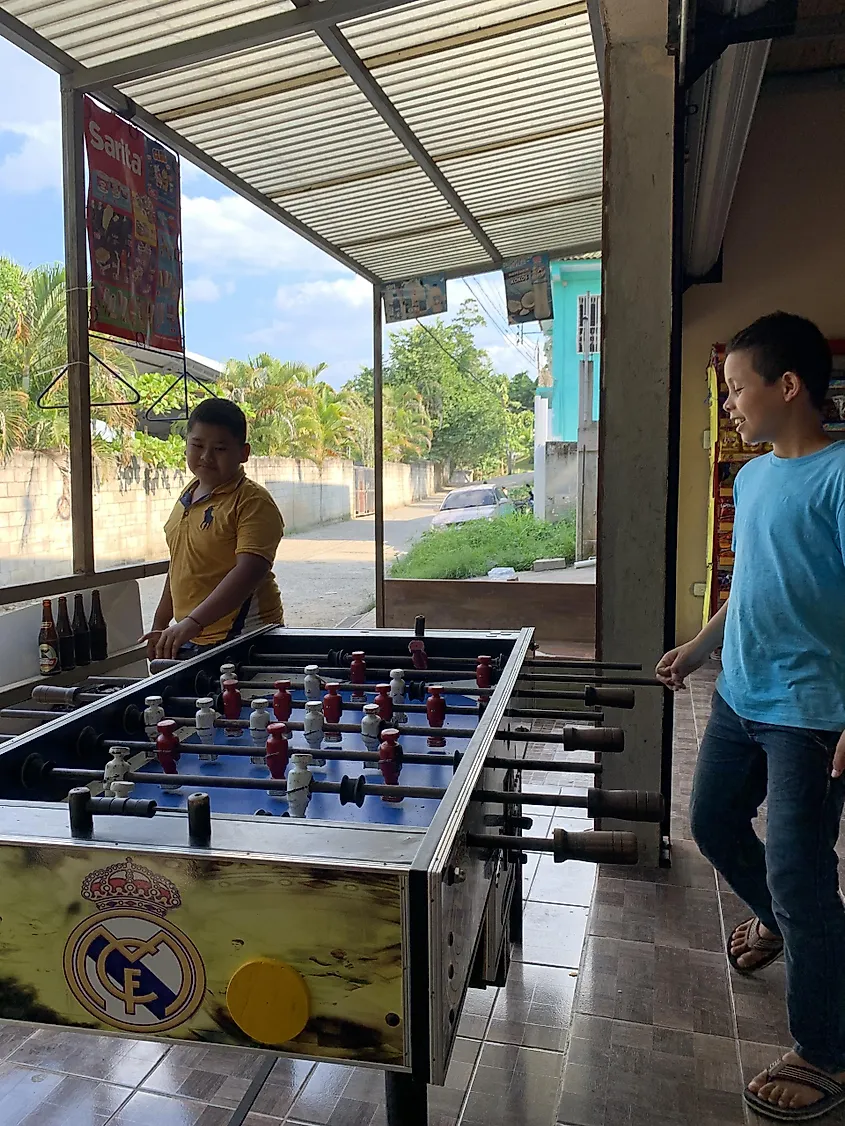
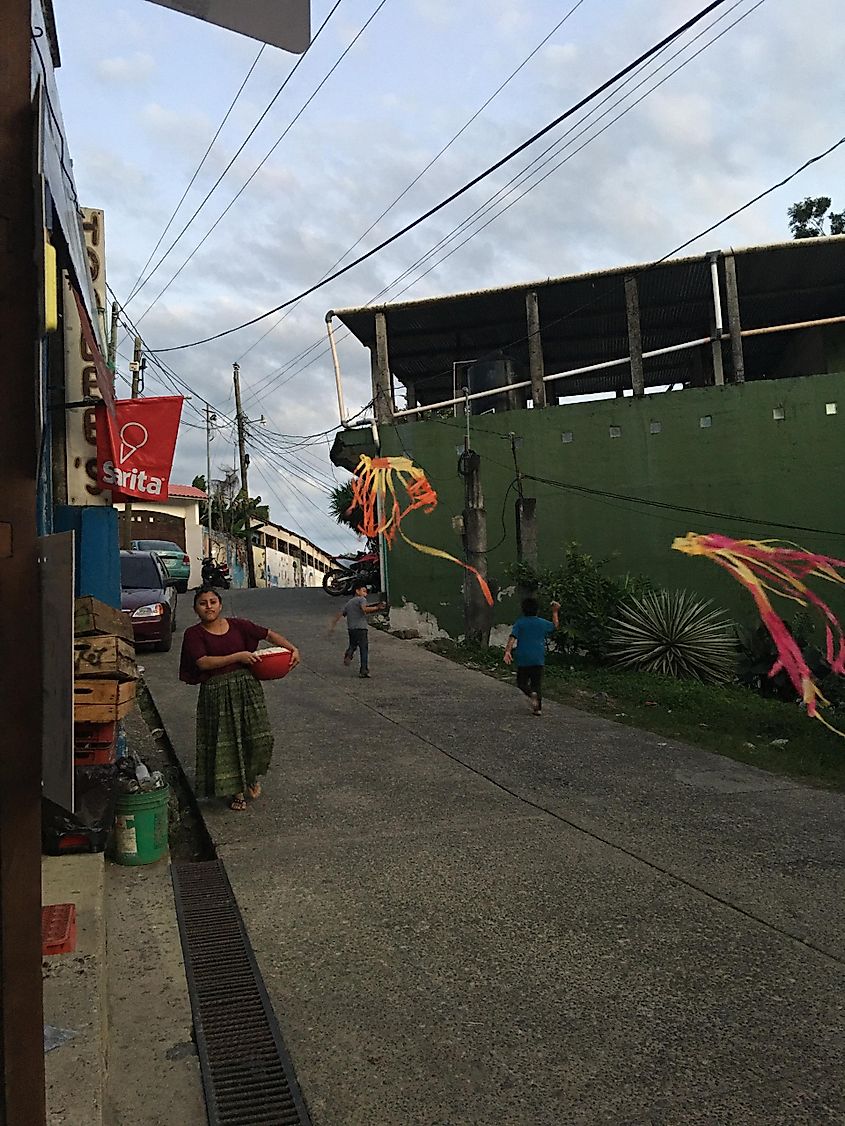
After working up a sweat, Irina and I might head for one of the numerous waterfront watering holes (some looked more official than others). They tended to receive a cooling breeze off the river, which took the afternoon edge off in a way our lonely fan couldn't contend with. The vibe was always casual, and I even played a handful of unplugged acoustic shows in exchange for beer and tips.
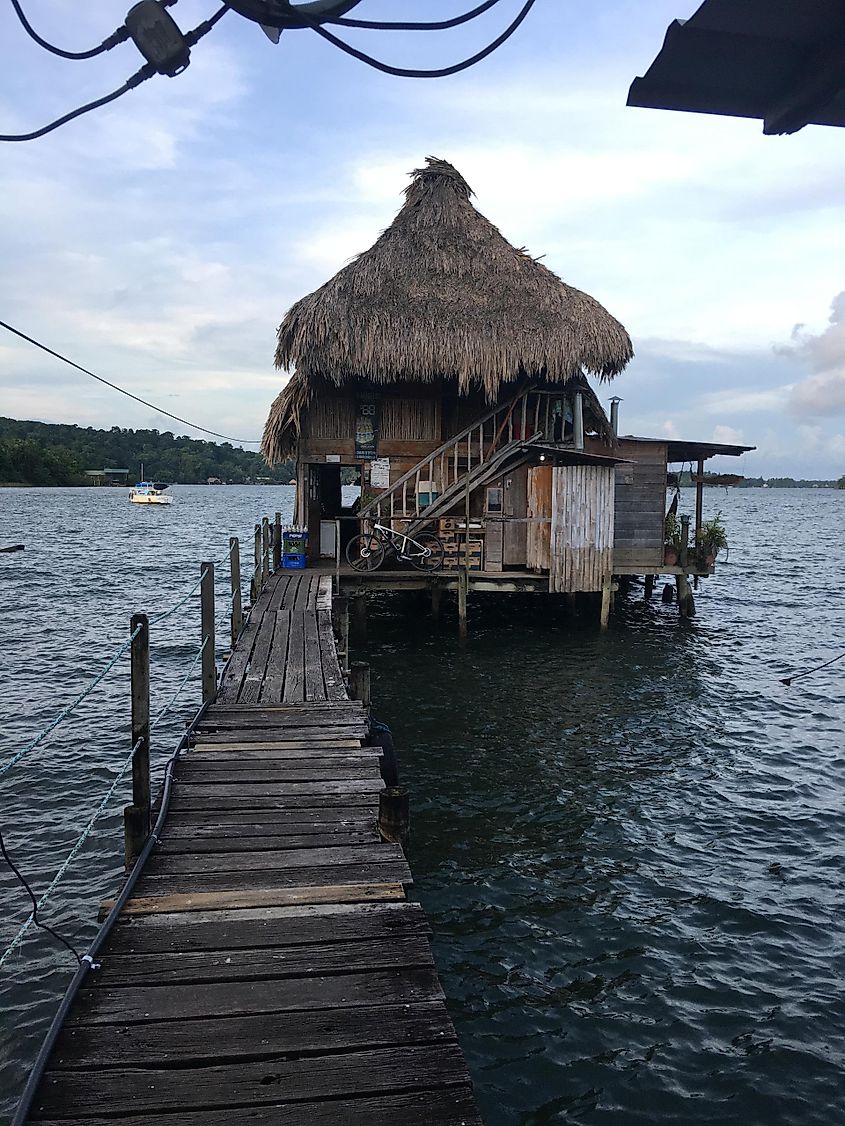
Compelling Day Trips Near Río Dulce
Río Dulce is within shouting distance of several stimulating places. The closest is Castillo de San Felipe de Lara – a 17th-century Spanish fort that sits right where Rio Dulce (the river) flows into Lago de Izabal. This impressive structure, erected to defend against both the British and pirates, is on the UNESCO World Heritage tentative list, as it marks a significant period in Guatemala's history.
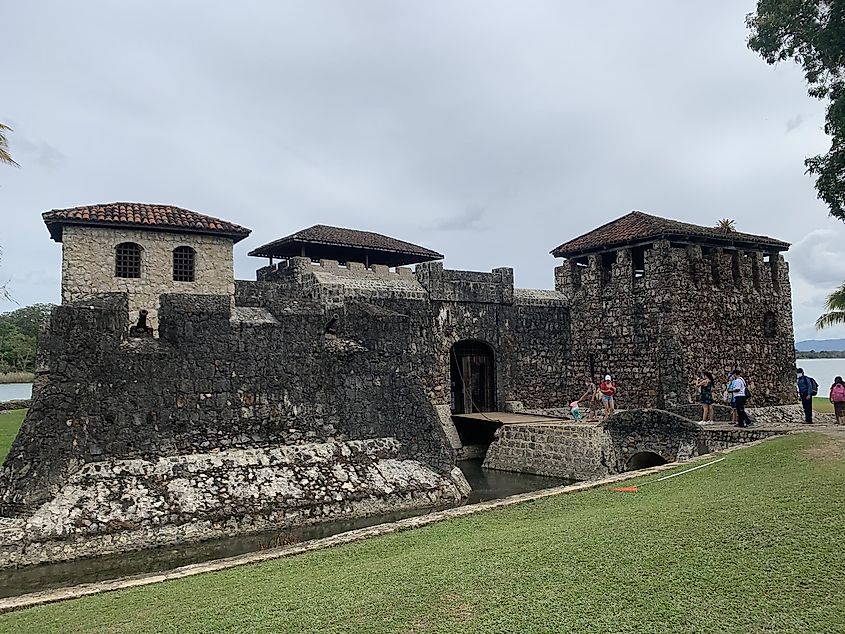
The park can be reached via lancha or land (tuk tuk, taxi, bus, etc.), and general admittance includes nearly total access to the castle. Visitors will discover submerged dungeons, tight, byzantine hallways, tiny doors to duck under (people were a lot smaller back then), and lots of cool viewpoints. The rest of the grounds are also well worth exploring. There are pleasant nature paths to wander, and unlike the river, which is unfortunately bombarded with waste, Lake Izabal is more suitable for swimming (not just for humans, but manatees too). Dichotomies!
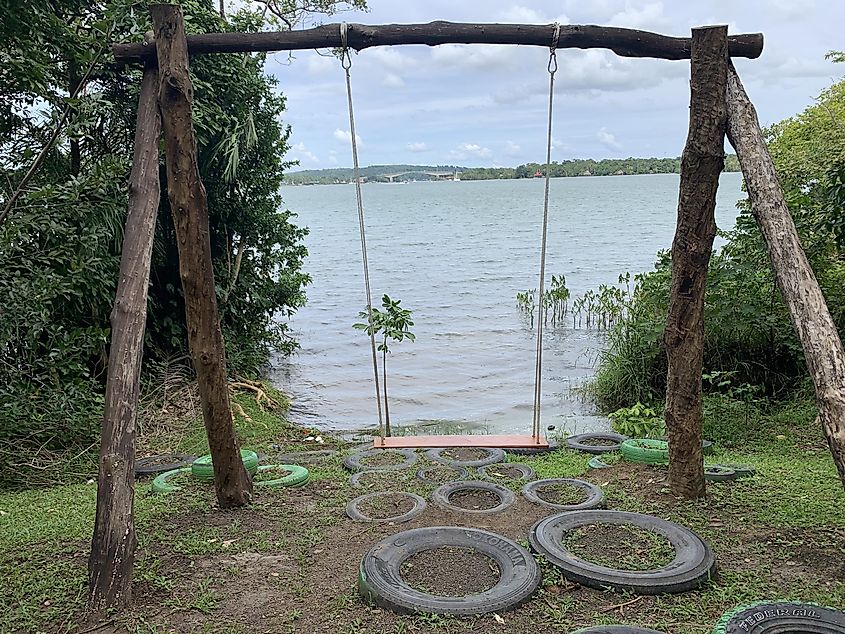
Further West along the North shore of Lago de Izabal, two natural wonders are accessible. Budget travelers with a propensity for quirky transportation will feel right at home in the jam-packed microbuses (commonly referred to as colectivos or kombis) that leave from the center of town – with barre-toned chaperones calling out potential destinations. This hop-on, hop-off vessels are perfect for exploring at your own pace. They are also great social lubricants (we instantly made a single-serving friend who accompanied us for the whole day).
Our first stop was El Boquerón. We knew that there was supposed to be an impressive canyon with humble boat tours, but when we jumped out, there was no obvious fanfare. In fact, we were the only ones there. Period. After a bit of stone kicking (and contending with the most horrendous bathroom I've ever seen), a single paddle boat emerged from the canyon, dropped a few fellow tourists off on the shore, and then signaled us to jump in. The man took us upstream until we were practically engulfed by the mile-high walls and rainforest canopy, let us off at a small rocky beach, and agreed to return in an hour. Once again, I adored how informal everything was. This kind of litigious arrangement would be impossible back home. But here there was no bureaucracy, no guardrails, no waivers to sign – just a guy in a boat, a big old canyon, a bit of cash exchanged, and a win-win arrangement for this silly group of strangers.
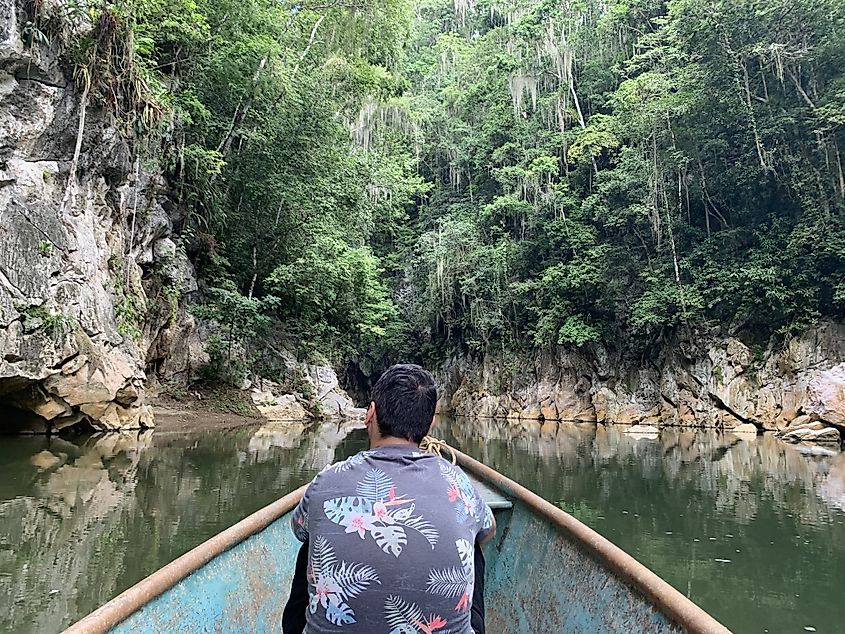
For stage two of our outing, we flagged down another bus and backtracked slightly towards Río Dulce. We were let off at a minimally-marked stop (the guy riding shotgun simply had to tell us when we arrived), with a trail leading to a hot spring waterfall known as Finca El Paraíso. We had to pay the equivalent of $2 (USD) to a woman with no discernible qualifications, and then we were accompanied by a man who claimed to be the protector of the site. He was, in actuality, an unappointed local working for donations, but he had an undeniable connection with the place, and showed us a good time.
A short hike through the woods brought us to the phenomenon. The area was supremely beautiful and also capriciously geothermal. Some parts of the river were ice cold, while others were dangerously hot. The main pool was invigorating towards the back, but upon swimming up to the falls, it felt like a hot tub was being continuously dumped on my head. This was a bit off-putting at first, but once I found the sweet spot, it was ridiculously relaxing. To cap off the therapeutic experience, our guide brought us up to the top of the falls, and slathered us in the mineral-rich mud. It may look like we're covered in diarrhea, but I can assure you it was a pleasant sensation.
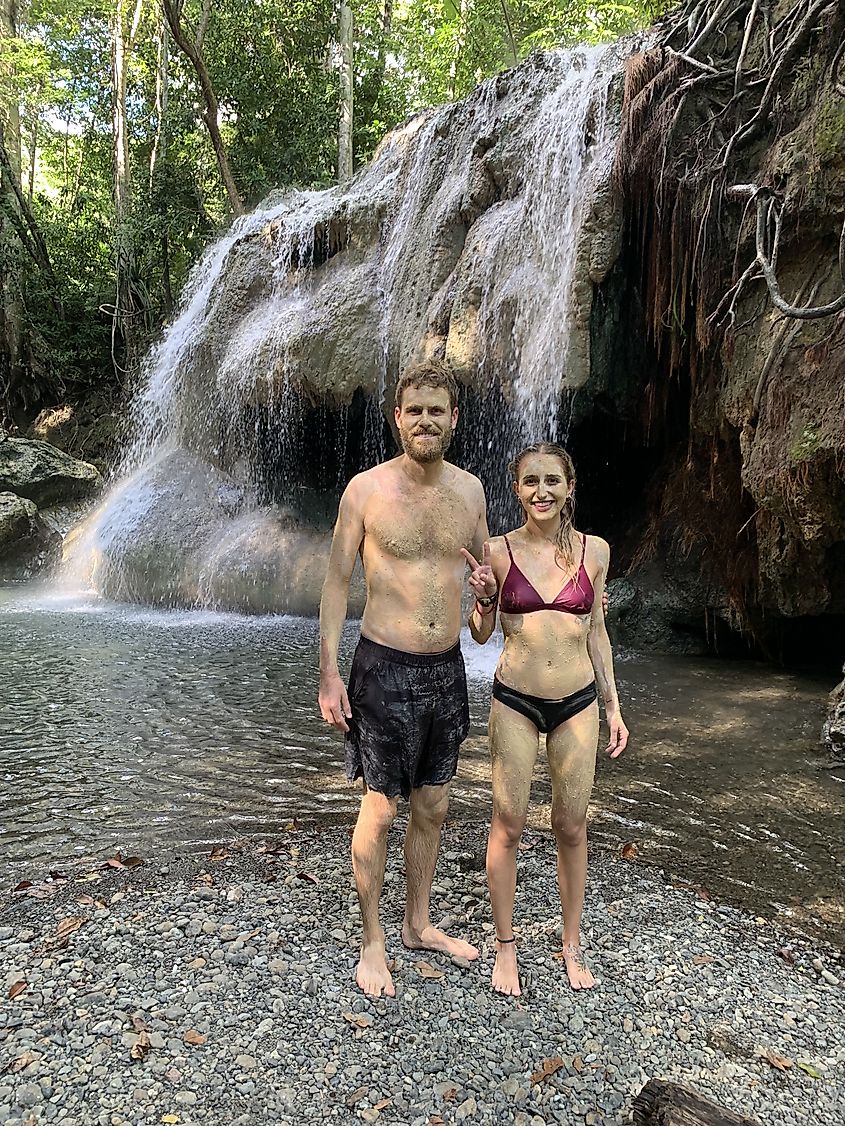
One word of warning for travelers who follow in our footsteps. Our unofficial guide (and some other online sources) spoke of a cave that was hidden underneath the waterfall. Several times he encouraged us to take a deep breath and plunge into the darkness, upon which time an air pocket would present itself. I was the only taker. I tried twice but only succeeded in banging my head, scrapping my body on the rocks, and growing legitimately fearful of drowning. Once you go under the massive rock, the only options are to either find the air pocket, reset, and then swim back out when ready; or fail to break through and frantically back-paddle your way out. I'm sure it's one of those things where once you do it, the method becomes obvious. But if going in blind, as most visitors will undoubtedly be, I wouldn't recommend taking the risk.
Río Dulce is a polarizing place. We found ourselves there because of random chance (i.e. searching Airbnbs in Central America for something that we could afford and settle into long-term), and only found out about the hidden perks after we arrived. I'm not opposed to classically appealing places, in fact part two of this series will take us to the Mayan ruins of Tikal and the colorful island of Flores, but sometimes it's fun to just see what you get, go with the flow, and experience average life in a foreign land – warts and all.











